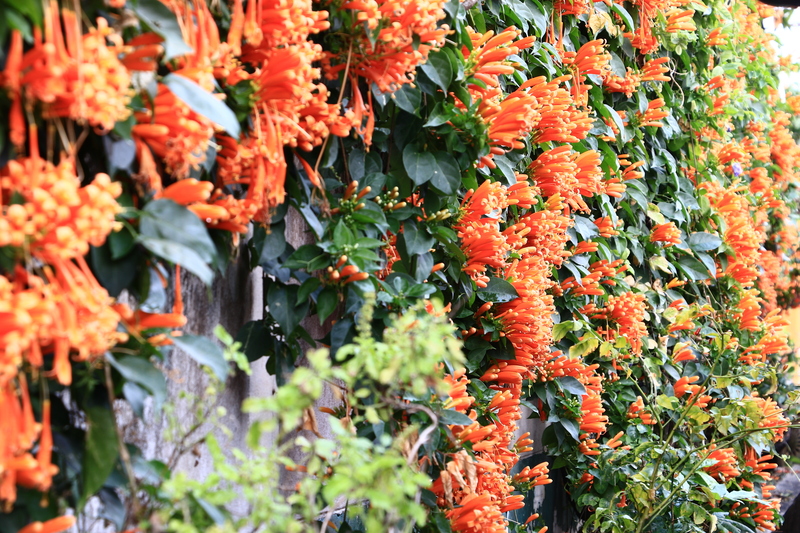Secrets to Ensuring Your Lawn Thrives in the Face of Summer Drought
During a scorching summer, maintaining a vibrant and healthy lawn can feel like an uphill battle. Dry weather, water restrictions, and relentless heat can stress even the most resilient grass. But with expert strategies and a touch of diligence, it's possible to enjoy a lush, green garden even during the toughest droughts. Unlock the secrets to ensuring your lawn thrives in the face of summer drought and transform your yard into an oasis despite challenging conditions.
The Science Behind Drought Stress on Lawns
Before delving into actionable drought survival tips, it's important to understand what happens to your lawn during prolonged dry periods.
- Water Deficiency: Lawns, especially cool-season grasses, rely heavily on regular hydration. Insufficient water disrupts physiological functions, causing grass to wilt, brown, and eventually become dormant.
- Soil Compaction: Dry soil hardens, which affects root penetration and nutrient uptake.
- Increased Thatch: Dead grass can accumulate rapidly during drought, insulating soil and further limiting water and air infiltration.
Recognizing these challenges is the first step in adopting strategies to ensure your lawn thrives during a drought.

Choose the Right Grass for Drought Resilience
A crucial yet often overlooked secret is choosing drought-tolerant grass species. Not all grasses are created equal--some are naturally better equipped to survive heat and water scarcity.
Top Drought-Resistant Lawn Grasses
- Bermuda Grass - Exceptional heat and drought tolerance, perfect for southern climates.
- Buffalo Grass - Requires less water and stays green in arid regions.
- Zoysia Grass - Slow-growing, dense, and highly drought-resistant.
- Tall Fescue - Deep-rooted, making it more drought-resilient than other cool-season varieties.
Re-seeding or overseeding with one of these grasses can be the key to a lawn prepared for summer droughts year after year.
Master the Art of Smart Watering
Watering efficiently is perhaps the single most important secret to a thriving lawn during drought. By implementing a smart watering routine, you can maximize every drop and help your grass withstand even the hottest day.
Essential Watering Tips
- Water deeply and less frequently: Promote deeper root growth by watering thoroughly but only when needed.
- Best time to water: Early morning (between 4 a.m. and 9 a.m.) reduces evaporation and fungal risk.
- Check soil moisture: Use a soil probe or screwdriver. If it penetrates easily to 6 inches, your lawn is adequately watered.
- Be mindful of rainfall: Adjust your irrigation schedule to account for natural precipitation.
Remember that most lawns require only about 1 to 1.5 inches of water per week, including rainfall, even during hot weather.
Soil Health: The Foundation of a Drought-Resistant Lawn
Strong, healthy soil can dramatically increase your lawn's ability to survive drought conditions.
Secrets to Improving Soil for Lawn Resilience
- Aeration: Relieve soil compaction by aerating in spring or fall, improving water infiltration and root development.
- Organic Matter: Add compost or organic amendments to retain moisture and supply nutrients.
- pH Balance: Keep your soil slightly acidic to neutral (pH 6.0-7.0) for optimal grass health.
- Mulch mowing: Leave grass clippings on the lawn--they return moisture and vital nutrients to the soil.
Regular soil testing can help guide your amendments and fertilization practices for maximum drought resistance.
Smart Mowing Techniques for Drought Survival
Lawn mowing is more than cosmetic--done properly, it can bolster your grass against drought stress.
Mowing Tips to Keep Your Lawn Healthy During Drought
- Raise the mowing height: Taller grass provides shade to roots and soil, reducing evaporation and heat stress. Cut cool-season grasses to 3-4 inches; warm-season varieties to 2-3 inches.
- Sharpen mower blades: Dull blades tear grass, increasing stress and disease susceptibility.
- Never remove more than 1/3 at a time: Cutting too much at once stunts growth and depletes root reserves.
- Leave clippings: As mentioned, returned clippings = free mulch for the lawn!
Pro tip: Avoid mowing during the hottest part of the day. Early mornings or evenings are best.
Responsible Fertilization During Summer Droughts
Fertilizing can be a double-edged sword during drought. Applying too much or the wrong kind can burn your stressed grass, but timely and appropriate fertilization supports recovery and resilience.
- Avoid fertilizing during severe drought: Grass can't process nutrients efficiently when water is scarce.
- Use slow-release organic fertilizers: These feed gradually and are gentler during dry spells.
- Schedule light feedings: Fertilize in early spring and late fall, before or after the peak summer heat.
- Skip weed-and-feed combos: Most contain high-nitrogen and herbicides that can damage drought-stressed turf.
The Role of Mulching and Ground Covers
If you're struggling to keep green grass everywhere, consider mulching and drought-tolerant ground covers in tough spots. This approach emphasizes sustainability and long-term drought resistance for your entire landscape.
Mulching Benefits
- Conserves soil moisture: Mulch reduces evaporation and keeps roots cool.
- Suppresses weeds: Fewer weeds means less competition for water.
- Improves soil structure: Organic mulches decompose, enhancing the fertility and texture of your soil.
Proven ground covers:
- Creeping thyme
- Sedum (Stonecrop)
- Blue star creeper
- Ajuga
Water-Smart Irrigation Systems
Automating your lawn irrigation isn't just a luxury--it's one of the best secrets to consistent drought defense.
- Drip irrigation: Delivers water directly to roots, reducing loss from evaporation or wind.
- Smart controllers: These adjust watering schedules based on weather forecasts, rainfall, and soil moisture sensors.
- Rain barrels: Harvest rainwater for eco-friendly irrigation free of charge.
- Regular maintenance: Check for leaks, clogs, or broken sprinkler heads to ensure efficient delivery.
Water only as much as necessary to keep your lawn alive, not to look extra lush during a drought--it's about survival, not perfection.
Beneficial Lawn Care Practices for Long-Term Drought Resistance
Let Your Lawn Rest
Sometimes, the best secret is doing less. Allow your lawn to go dormant if drought conditions are severe. Withhold fertilization and minimize mowing to let the turf conserve resources. Most grasses naturally revive with the return of rain and cooler weather.
Reduce Traffic and Compaction
Foot traffic, heavy furniture, and frequent dog use can increase compaction and stress during dry spells. Temporarily cordon off highly trafficked areas during peak drought to give your grass a fighting chance.
Embrace Sustainable Landscaping
- Convert non-essential lawn areas to xeriscape designs featuring rocks, mulch, and drought-hardy plantings.
- Incorporate native grasses and wildflowers for natural drought resistance and pollinator support.
- Maintain trees and shrubs that provide shade to minimize temperature extremes and water loss.
Recognizing and Treating Drought Damage
- Look for brown, wilted blades, bare patches, or signs of death: These may indicate serious stress rather than dormancy.
- Perform the tug test: Gently pull up on a section of brown grass. If roots remain intact, the lawn is likely dormant and will recover. If the grass comes up easily with no roots, reseeding or patch repair may be required.
- After drought, repair thin or bare areas: Reseed with drought-resistant grasses or install sod as needed in late summer or early fall for fall root establishment.
Common Mistakes to Avoid During Summer Drought
- Overwatering in panic: Excessive water wastes resources and encourages diseases without improving resilience.
- Cutting grass too short: This exposes roots to extra heat and speeds moisture loss.
- Applying too much fertilizer: Can burn dry lawns and wastes nutrients.
- Neglecting equipment maintenance: Broken sprinklers or dull mower blades add stress.
- Ignoring localized dry spots: Address areas with poor drainage, excessive thatch, or compaction promptly.

FAQ: Drought-Proofing Your Lawn
How do I know if my lawn is going dormant or dying?
Dormant lawns are uniformly brown and the grass remains attached at the roots. Dead grass pulls up easily and may have grey or patchy bare spots.
Should I water my lawn every day in a drought?
No. Shallow, daily watering encourages weak roots. Instead, water deeply and infrequently--typically once or twice a week.
Is it really worth investing in drought-tolerant grass?
Absolutely. Drought-resistant varieties bounce back faster, require less supplemental water, and lower your long-term maintenance expenses.
Conclusion: Mastering Drought-Proof Lawn Care
While summer droughts present undeniable challenges, homeowners hold the keys to lush, resilient lawns if they embrace sustainable habits, smart technology, and thoughtful plant selection.
- Pick the right grass varieties
- Master deep but infrequent watering routines
- Prioritize soil health and proper mowing
- Use fertilizers judiciously and avoid stress during dormancy
- Adopt mulching, sustainable landscaping, and irrigation upgrades
Armed with these secrets to ensuring your lawn thrives in the face of summer drought, you'll enjoy a healthier, more beautiful yard no matter how dry it gets. A smart, informed approach today guarantees abundant green for summers to come!